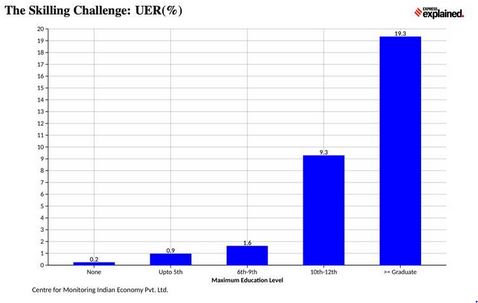From UPSC perspective, the following things are important :
Prelims level: Article 19 and 21
Mains level: Paper 3- Issues with surveillance by the government
Context
The ‘Pegasus Project’ report says that over “300 verified Indian mobile telephone numbers, including those used by ministers, opposition leaders, journalists, the legal community, businessmen, government officials, scientists, rights activists and others”, were targeted using spyware made by the Israeli firm, NSO Group.
Threat to press freedom
- Revelations highlight a disturbing trend with regard to the use of hacking software against dissidents and adversaries.
- A significant number of Indians reportedly affected by Pegasus are journalists.
- This is not surprising since the World Press Freedom Index produced by Reporters Without Borders has ranked India 142 out of 180 countries in 2021.
- The press requires (and in democracies is afforded) greater protections on speech and privacy.
- Privacy and free speech are what enable good reporting.
- This has been recognised in Supreme Court decisions.
- In the absence of privacy, the safety of journalists, especially those whose work criticises the government, and the personal safety of their sources is jeopardised.
- Such a lack of privacy, therefore, creates an aura of distrust around these journalists and effectively buries their credibility.
Issues with the legal provision
- Provisions of law under the Indian Telegraph Act of 1885 and the Information Technology (IT) Act of 2000 are used by the government for its interception and monitoring activities.
- While the provisions of the Telegraph Act relate to telephone conversations, the IT Act relates to all communications undertaken using a computer resource.
- Both provisions are problematic and offer the government total opacity in respect of its interception and monitoring activities.
- Section 69 of the IT Act and the Interception Rules of 2009 are even more opaque than the Telegraph Act, and offer even weaker protections to the surveilled.
- No provision, however, allows the government to hack the phones of any individual since the hacking of computer resources, including mobile phones and apps, is a criminal offence under the IT Act.
Issues with surveillance system
- Surveillance itself, whether under a provision of law or without it, is a gross violation of the fundamental rights of citizens.
- Violation of freedom of speech: The very existence of a surveillance system impacts the right to privacy and the exercise of freedom of speech and personal liberty under Articles 19 and 21 of the Constitution, respectively.
- It prevents people from reading and exchanging unorthodox, controversial or provocative ideas.
- No scope for judicial scrutiny: There is also no scope for an individual subjected to surveillance to approach a court of law prior to or during or subsequent to acts of surveillance since the system itself is covert.
- No oversight: In the absence of parliamentary or judicial oversight, electronic surveillance gives the executive the power to influence both the subject of surveillance and all classes of individuals, resulting in a chilling effect on free speech.
- Against separation of power: Constitutional functionaries such as a sitting judge of the Supreme Court have reportedly been surveilled under Pegasus.
- Vesting such disproportionate power with one wing of the government threatens the separation of powers of the government.
- The existing provisions are insufficient to protect against the spread of authoritarianism since they allow the executive to exercise a disproportionate amount of power.
Way forward
- There needs to be oversight from another branch of the government.
- Judicial oversight: Only the judiciary can be competent to decide whether specific instances of surveillance are proportionate, whether less onerous alternatives are available, and to balance the necessity of the government’s objectives with the rights of the impacted individuals.
- Surveillance reforms: Not only are existing protections weak but the proposed legislation related to the personal data protection of Indian citizens fails to consider surveillance while also providing wide exemptions to government authorities.
- Surveillance reform is the need of the hour in India.
Consider the question “Discuss the threats posed by the use of surveillance systems by the government. Suggest the measures to deal with these threats.”
Conclusion
The only solution to the problem of spyware is immediate and far-reaching surveillance reform.
Get an IAS/IPS ranker as your 1: 1 personal mentor for UPSC 2024








